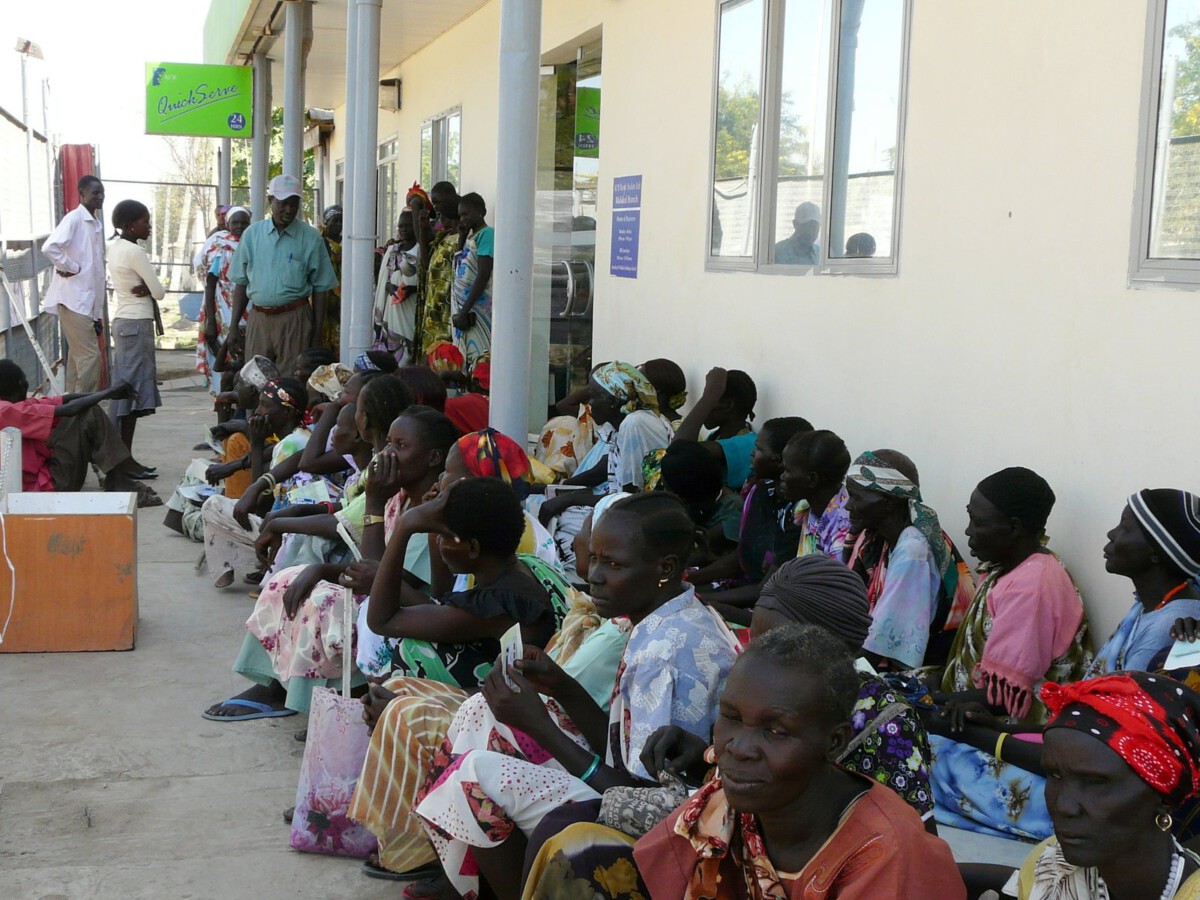Florida’s Comprehensive Flood Management System Sets the Standard

Florida has emerged as a national leader in flood preparedness, largely due to its extensive experience with hurricanes and tropical storms. The state allocated $4.2 billion in flood mitigation funding through 2024, according to the Florida Division of Emergency Management. Their comprehensive approach includes advanced early warning systems, mandatory flood insurance requirements in high-risk areas, and robust evacuation protocols that have been refined over decades. The state’s flood mapping system covers 95% of coastal communities and is updated annually using LiDAR technology and satellite imagery. Florida’s investment in green infrastructure, including restored wetlands and living shorelines, has reduced flood damage by an estimated 30% in participating communities since 2022.
Louisiana’s Innovative Coastal Restoration Efforts

Louisiana faces unique challenges with both coastal flooding and river flooding, making it a testing ground for innovative solutions. The state’s $50 billion Coastal Master Plan, launched in 2023, represents one of the most ambitious flood preparedness initiatives in the nation. This plan includes 124 restoration and protection projects designed to build or maintain over 800 square miles of land over the next 50 years. Louisiana has also pioneered the use of “living levees” that incorporate vegetation and natural materials to provide more resilient flood protection. The state’s Community Rating System participation rate of 78% is among the highest nationally, resulting in reduced flood insurance premiums for residents. Recent data from the Louisiana Coastal Protection and Restoration Authority shows that completed projects have already prevented an estimated $2.3 billion in flood damages.
California’s Multi-Hazard Approach to Flood Risk

California has taken a comprehensive approach to flood preparedness that addresses both coastal and inland flooding risks. The state invested $8.5 billion in flood management infrastructure improvements between 2022 and 2024, according to the California Department of Water Resources. Their innovative Forecast Informed Reservoir Operations program uses advanced weather forecasting to optimize dam releases, reducing flood risk while maintaining water supply reliability. California’s AB 2445 legislation, enacted in 2023, requires all new development in flood-prone areas to incorporate climate-resilient design standards. The state has also established regional flood management agencies that coordinate across jurisdictions, improving response times and resource allocation. Urban areas like Los Angeles have implemented extensive green infrastructure programs, with over 500 bioswales and retention basins installed since 2023.
Texas Struggles with Rapid Urban Development and Flood Risk

Texas presents a complex picture of flood preparedness, with significant variations across the state’s diverse regions. Despite experiencing devastating floods in recent years, including the 2024 Houston flooding that caused $12 billion in damages, many Texas communities lag in comprehensive flood planning. The Texas Water Development Board reports that only 42% of the state’s flood-prone communities have updated their floodplain maps within the last five years. Harris County, home to Houston, has made substantial improvements following Hurricane Harvey, investing $5 billion in flood infrastructure since 2022. However, rapid development in other Texas metropolitan areas often outpaces flood mitigation efforts, with new construction frequently occurring in high-risk areas. The state’s decentralized approach to flood management has created inconsistencies in preparedness levels across different municipalities.
North Carolina’s Proactive Mountain and Coastal Strategies

North Carolina has developed distinct flood preparedness strategies for its diverse geographic regions, from the Appalachian Mountains to the Outer Banks. The state’s $2.8 billion Resilient Coastal Communities Program, funded through 2025, focuses on nature-based solutions and community-level resilience. Following Hurricane Florence in 2018 and subsequent flooding events, North Carolina has required all state-funded infrastructure projects to incorporate future flood projections. The state’s innovative flood warning system, launched in 2023, provides real-time alerts to over 2.5 million residents in flood-prone areas. North Carolina has also pioneered floodplain buyout programs, relocating over 3,000 homes from high-risk areas since 2022. Their multi-agency coordination model has reduced emergency response times by an average of 35% compared to pre-2020 levels.
New Jersey’s Urban Flood Innovation

New Jersey has become a leader in urban flood management, particularly following the lessons learned from Hurricane Sandy in 2012. The state has invested $3.7 billion in flood resilience projects since 2022, with a focus on green infrastructure and coastal protection. New Jersey’s mandatory flood disclosure law, enacted in 2024, requires property sellers to provide detailed flood risk information to potential buyers. The state’s urban areas have implemented extensive permeable pavement programs, with Newark and Jersey City converting over 40% of their parking areas to flood-reducing surfaces. New Jersey’s coastal communities participate in the National Flood Insurance Program at a 94% rate, one of the highest in the nation. The state’s early warning system integration with social media platforms has improved evacuation compliance rates to over 85% in mandatory evacuation zones.
Arizona’s Limited Flood Preparedness Despite Flash Flood Risks

Arizona ranks among the states with the least comprehensive flood preparedness, despite facing significant flash flood risks in desert environments. The state allocates only $180 million annually to flood mitigation efforts, according to the Arizona Department of Water Resources, far below the recommended levels for a state of its size. Many Arizona communities lack adequate storm water infrastructure, with Tucson and Phoenix experiencing regular flooding during monsoon seasons. The state’s participation in the National Flood Insurance Program is only 23%, leaving many residents financially vulnerable to flood damages. Arizona’s rapid population growth has outpaced infrastructure development, with many new subdivisions built in historically flood-prone washes and arroyos. Recent analysis by the Arizona State University shows that 60% of the state’s flood-related fatalities occur in vehicles, highlighting the need for better public education and warning systems.
Oklahoma’s Tornado-Focused Emergency Management Overlooks Flood Risks

Oklahoma’s emergency management system has historically focused on tornado preparedness, leaving flood mitigation as a secondary priority despite significant river and flash flood risks. The state experienced $800 million in flood damages in 2024 alone, yet flood preparedness funding remains limited at $95 million annually. Only 38% of Oklahoma’s flood-prone communities have comprehensive flood management plans, according to the Oklahoma Water Resources Board. The state’s aging levee system includes 200 structures that are over 50 years old and in need of significant upgrades or replacement. Oklahoma’s rural communities are particularly vulnerable, with many lacking early warning systems or evacuation routes for flood emergencies. The state’s recent legislative session in 2024 failed to pass proposed flood insurance requirements for new development in high-risk areas, leaving communities exposed to future financial losses.
New York’s Metropolitan Focus Leaves Rural Areas Behind

New York presents a tale of two states when it comes to flood preparedness, with extensive resources devoted to New York City while rural areas receive limited attention. The metropolitan area has invested $20 billion in flood protection since Hurricane Sandy, including innovative projects like the East Side Coastal Resiliency program. However, upstate communities have struggled with limited resources and aging infrastructure, with many small towns lacking comprehensive flood plans. The state’s Hazard Mitigation Grant Program distributed $1.2 billion in 2024, but 78% of funding went to downstate projects. Rural New York communities along the Hudson River and other waterways have experienced increasing flood frequency, with 45% more flood events recorded in 2024 compared to the 2010-2020 average. The disparity in preparedness levels has created significant vulnerabilities in communities that lack the political influence and tax base of urban areas.
Colorado’s Mountain Communities Face Unique Challenges

Colorado’s mountainous terrain creates distinct flood preparedness challenges that require specialized approaches and significant financial resources. The state has allocated $650 million for flood mitigation since the devastating 2013 Front Range floods, but many mountain communities remain vulnerable. Colorado’s innovative flood early warning system uses remote sensors and satellite technology to monitor snowpack and precipitation levels in real-time. The state requires all new development above 5,000 feet elevation to conduct specialized flood risk assessments that account for snowmelt and debris flows. However, many of Colorado’s smaller mountain towns lack the resources to implement comprehensive flood protection measures, relying instead on volunteer emergency response teams. The Colorado Water Conservation Board reports that 65% of the state’s flood damages occur in communities with populations under 10,000, highlighting the vulnerability of rural mountain areas.
Mississippi’s Infrastructure Deficits Hamper Flood Response

Mississippi faces significant challenges in flood preparedness due to aging infrastructure and limited financial resources, despite being one of the most flood-prone states in the nation. The state’s levee system, much of which dates to the 1930s, requires an estimated $2.1 billion in upgrades according to the U.S. Army Corps of Engineers. Mississippi’s participation in flood mitigation programs remains low, with only 31% of eligible communities enrolled in the Community Rating System as of 2024. The state experienced severe flooding in 2023 that displaced over 15,000 residents and caused $1.8 billion in damages, yet state funding for flood preparedness increased by only 12% the following year. Rural Mississippi communities are particularly vulnerable, with many lacking basic flood warning systems or evacuation transportation. The state’s poverty rate of 19.6% limits individual preparedness, as many residents cannot afford flood insurance or elevation improvements to their homes.
Washington State’s Comprehensive Regional Approach

Washington has developed one of the nation’s most comprehensive regional approaches to flood preparedness, addressing risks from both coastal storm surge and mountain snowmelt. The state’s $1.8 billion Flood Control Assistance Account Program has funded over 300 projects since 2022, focusing on nature-based solutions and community resilience. Washington’s innovative salmon habitat restoration projects serve dual purposes, providing flood protection while supporting endangered species recovery. The state requires all coastal communities to incorporate sea level rise projections of at least 2.5 feet by 2100 in their planning documents, among the most aggressive requirements nationally. Washington’s multi-county flood warning system covers 89% of the state’s population and integrates with emergency broadcast systems in multiple languages. The state’s voluntary property buyout program has successfully relocated 1,200 homes from repetitive flood loss areas since 2023, preventing an estimated $340 million in future damages.
The Stark Reality of Flood Preparedness Across America

The disparity in flood preparedness across American states reveals critical gaps that put millions of residents at risk during increasingly frequent and severe weather events. States like Florida, Louisiana, and California have invested billions in comprehensive flood management systems, while others lag dangerously behind despite facing significant risks. The Federal Emergency Management Agency reports that states with proactive flood preparedness save an average of $6 for every dollar invested in mitigation efforts. Climate change projections indicate that flood risks will continue to increase nationwide, making the preparation gap between leading and lagging states even more consequential. The experiences of 2024’s record-breaking flood season demonstrated that reactive approaches to flood management are far more costly than proactive planning and investment. Will your state be ready when the next major flood event strikes?







